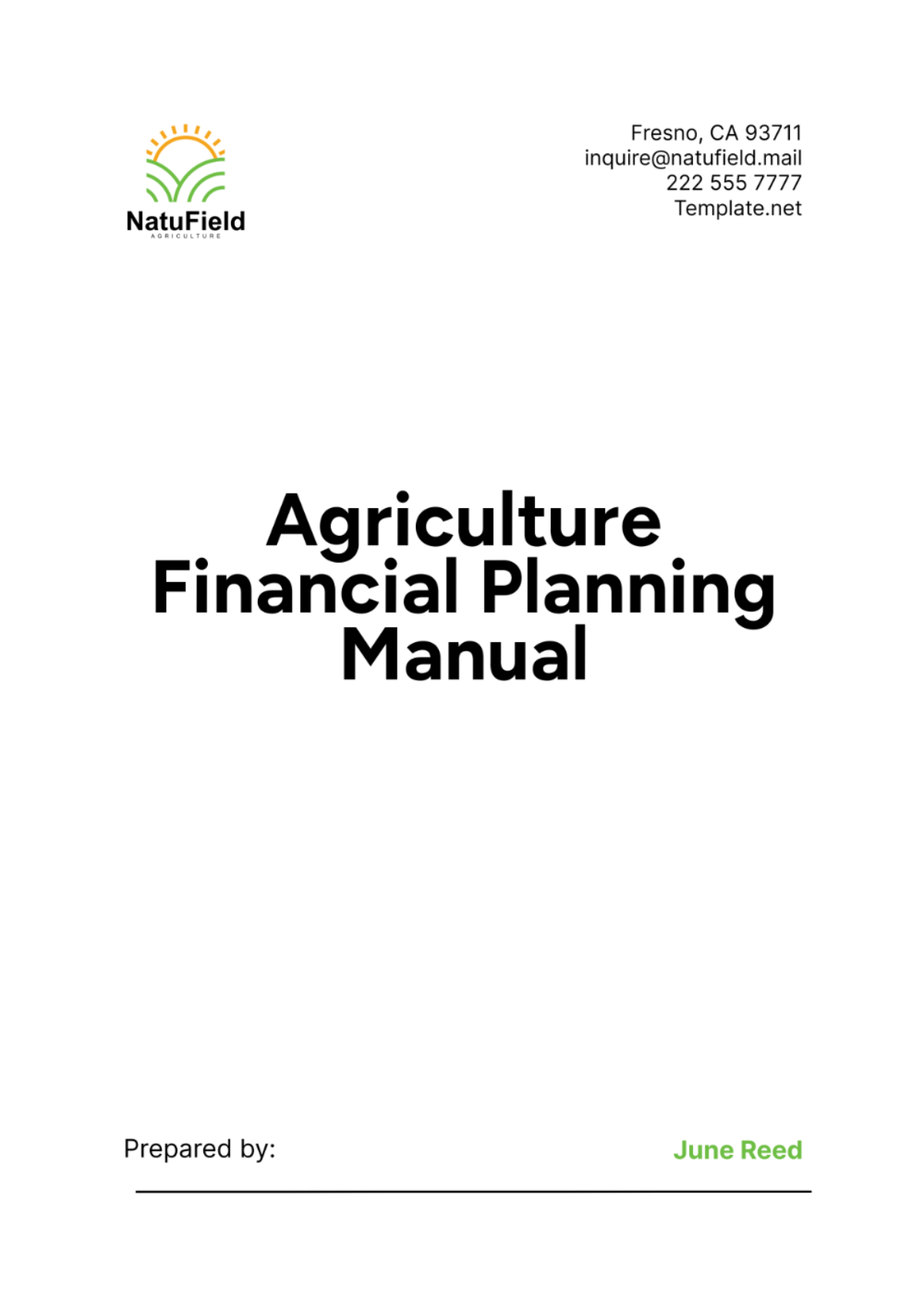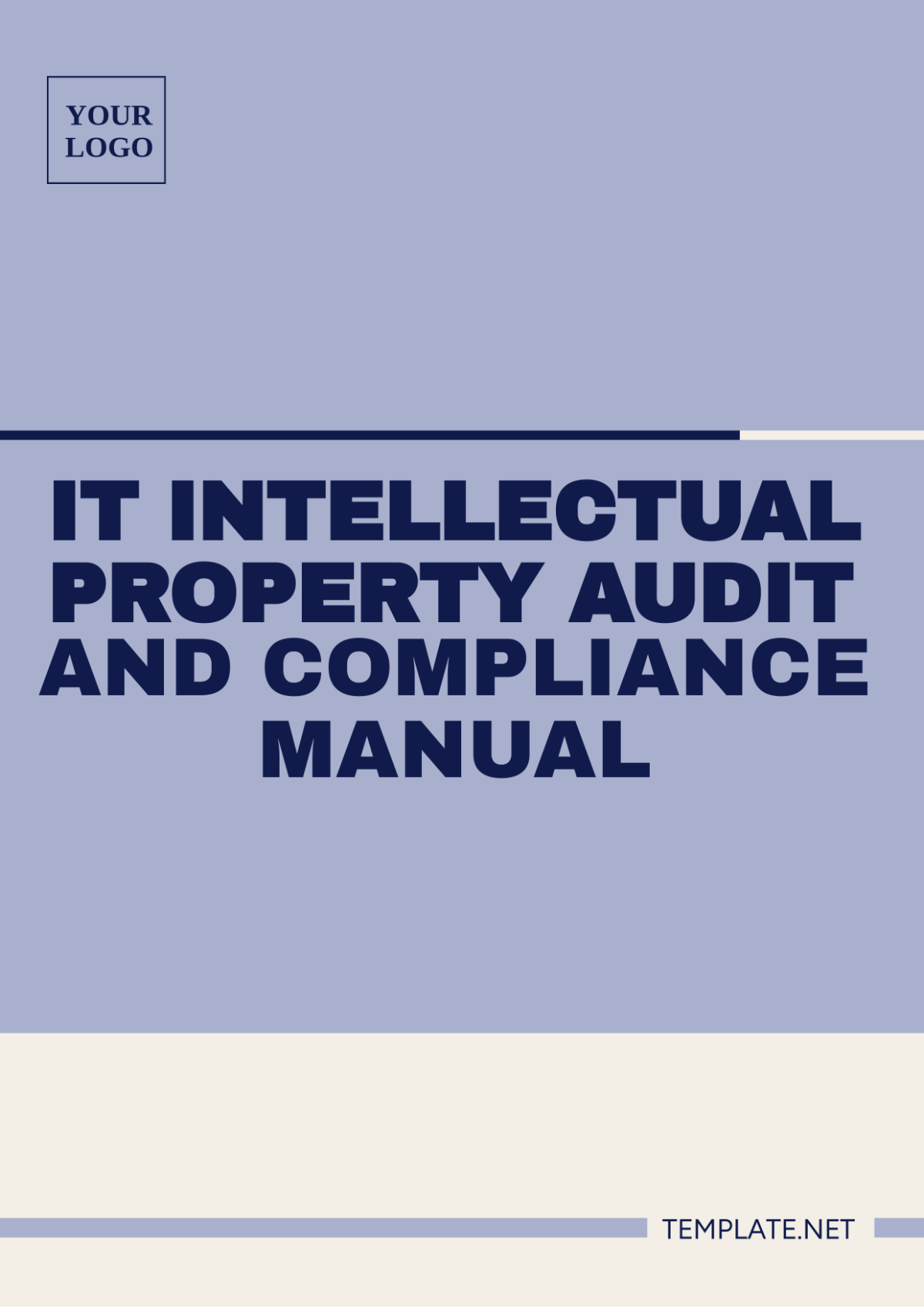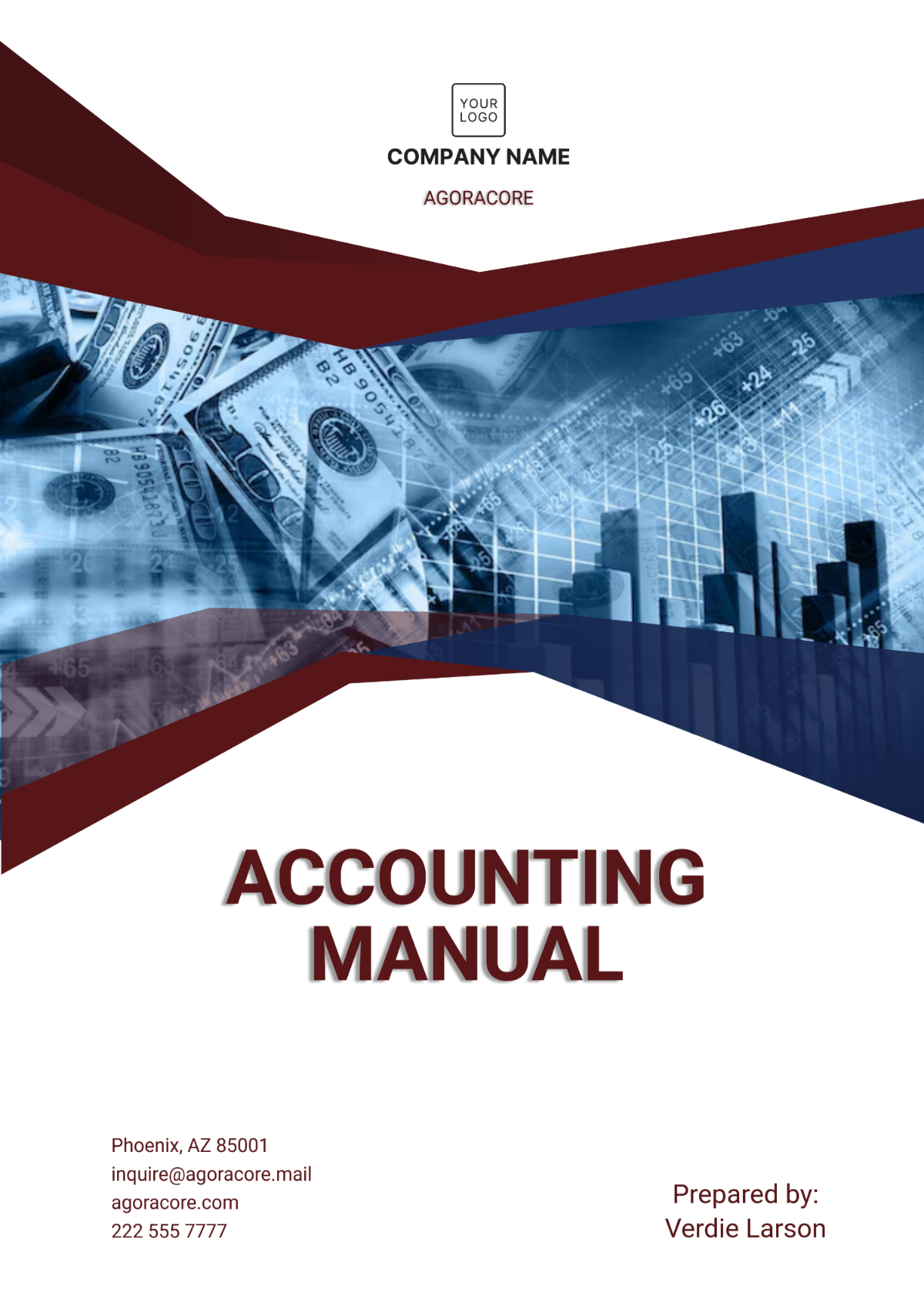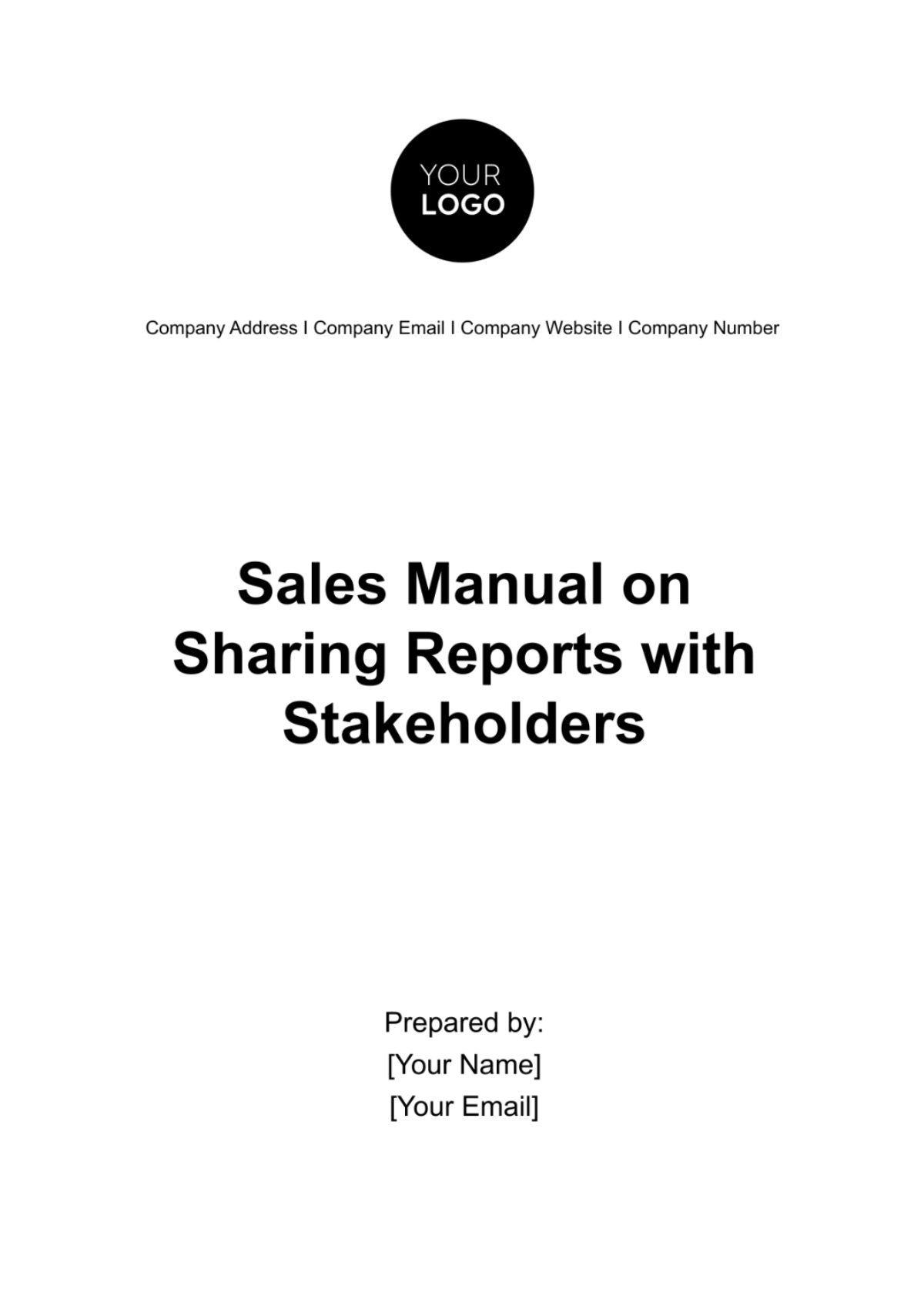Sales Presentation Script Manual
I. Introduction
A. Purpose of the Manual
This manual is designed to empower our sales team with the skills and knowledge required to deliver compelling and effective sales presentations. The goal is to provide a structured approach to crafting and executing presentations that resonate with our prospects, addressing their needs, and positioning our solutions as the best choice. By adhering to the strategies and scripts outlined herein, sales representatives will enhance their ability to communicate value, overcome objections, and close more deals successfully.
B. How to Use This Manual
To maximize the benefits of this manual, we recommend reading it thoroughly and practicing the scripts and techniques in various sales scenarios. Use it as a reference guide to prepare for presentations, tailoring the scripts to fit the unique needs of each prospect. Regular review and practice will help refine your presentation skills, making them more natural and effective over time. Additionally, incorporate feedback from real sales situations to continually improve your approach.
II. Understanding Your Audience
A. Identifying Your Prospect's Needs
The first step in preparing a successful sales presentation is to understand the specific needs, challenges, and goals of your prospect. This understanding allows you to tailor your presentation to address these points directly, demonstrating empathy and positioning our solutions as tailored to their unique situation. Techniques for identifying your prospect's needs include:
Conducting thorough pre-meeting research.
Asking open-ended questions early in the presentation.
Listening actively to the prospect's responses.
B. Tailoring the Presentation to the Audience
Once the prospect's needs are understood, the presentation must be adapted to speak directly to these needs. This involves:
Highlighting the features and benefits of our solutions that are most relevant to the prospect.
Using language and examples that resonate with the prospect's industry, company size, and specific challenges.
Preparing responses to potential objections or concerns that the prospect might have, based on their needs and situation.
III. Preparation Before the Presentation
A. Researching Your Prospect
Thorough research on your prospect is crucial for tailoring your presentation to their specific needs and challenges. Effective research provides a deep understanding of the prospect's business, industry trends, and potential pain points, allowing for a more personalized and impactful presentation. To conduct comprehensive prospect research, follow these guidelines:
Review the prospect's company website, focusing on recent news, product launches, and their mission statement.
Analyze their social media profiles for insights into their company culture and customer interactions.
Investigate industry reports and news articles to understand broader market challenges and opportunities.
Use LinkedIn to learn about key decision-makers and their roles within the organization.
Identify any mutual connections who can provide additional insights or an introduction.
B. Setting Presentation Objectives
Clear objectives guide the structure and content of your presentation, ensuring it meets both your goals and the needs of your prospect. Before each presentation, it's important to define what you aim to achieve. These objectives can range from educating the prospect about our solutions to securing a follow-up meeting. To set effective presentation objectives, consider the following guidelines:
Define what success looks like for this presentation, such as a signed contract or a second meeting.
Understand the prospect's buying stage and tailor your objectives to move them to the next stage.
Align your objectives with the prospect's business goals and challenges.
Prepare to measure the outcome of the presentation against these objectives.
C. Preparing Your Sales Toolkit
A well-prepared sales toolkit is essential for delivering a persuasive and engaging presentation. Your toolkit should include materials and resources that support your message and demonstrate the value of our solutions. Below is a table outlining key tools in your sales toolkit and their purposes:
Tool | Description |
|---|---|
Product Brochures | Provide detailed information on features, benefits, and specifications of our solutions. |
Testimonials | Share success stories and endorsements from satisfied customers to build credibility. |
Case Studies | Highlight how our solutions have addressed similar challenges for other clients. |
Demo Videos | Show our solutions in action, providing a visual demonstration of their impact and usability. |
Pricing Sheets | Offer clear, concise information on pricing models, packages, and any available discounts. |
FAQs | Prepare answers to common questions, helping to address any concerns or objections upfront. |
Contact Information | Ensure you have all necessary contact details for follow-up questions or further discussions. |
IV. The Sales Presentation Structure
A. Opening: How to Start Strong
The opening of your sales presentation sets the tone for the entire meeting. It's your opportunity to make a strong first impression, capture the prospect's interest, and establish a foundation for a productive conversation. A well-crafted opening paves the way for a successful presentation.
Greeting and Introduction
Begin with a warm, professional greeting and a clear introduction of yourself and our organization. Explain the purpose of the meeting succinctly, ensuring the prospect knows why they're here and what they can gain. Guidelines for an effective greeting and introduction include:
Smile and offer a friendly yet professional greeting to create a welcoming atmosphere.
Clearly state your name and your role within our organization.
Briefly introduce our organization, focusing on our mission and the value we provide to clients.
Thank the prospect for their time and express your enthusiasm about the opportunity to meet with them.
Establishing Rapport
Building rapport with your prospect is critical for creating a comfortable and open dialogue throughout the presentation. Establishing a connection early on encourages the prospect to engage more fully with your message. To establish rapport, follow these guidelines:
Find common ground or shared interests to personalize the conversation.
Listen actively to the prospect's responses and comments, showing genuine interest.
Use the prospect's name periodically throughout the conversation to personalize your interaction.
Share a brief, relevant anecdote or insight to humanize the conversation and build trust.
Agenda Setting
Setting a clear agenda outlines the structure of your presentation and sets expectations for the meeting. It helps keep the presentation focused and ensures that both you and the prospect understand the key points that will be covered. Guidelines for effective agenda setting include:
Outline the main topics you will discuss during the presentation.
Estimate how much time will be spent on each section, keeping the total meeting time in mind.
Mention that you will address questions and encourage the prospect to ask for clarifications as needed.
Seek agreement on the agenda from the prospect to ensure their needs and interests will be covered.
B. Body: Delivering Your Message
The body of your presentation is where you dive deep into the value proposition of our solutions, addressing the prospect's needs and demonstrating how we can help them achieve their goals. This section is the core of your presentation, where you make your case.
Discussing Features and Benefits
Focus on how the features of our solutions translate into tangible benefits for the prospect. Tailor your discussion to their specific needs and challenges. Guidelines for effectively discussing features and benefits include:
Highlight the features most relevant to the prospect's identified needs.
Explain the benefits of these features in terms of efficiency, cost savings, or other value propositions.
Use data and evidence to support your claims about the benefits.
Relate each feature and benefit back to the prospect's goals or pain points.
Highlighting Competitive Advantages
It's essential to differentiate our solutions from those of competitors. Clearly articulate what sets us apart and why we are the best choice. To highlight our competitive advantages, follow these guidelines:
Identify key differentiators that are meaningful to the prospect.
Use comparative data where appropriate to illustrate our advantages.
Discuss our unique approach or technology and how it benefits the prospect.
Emphasize our commitment to customer service and support, if relevant.
Using Stories and Testimonials
Stories and testimonials are powerful tools for making your message resonate. They provide real-world examples of how our solutions have benefited similar clients. Guidelines for using stories and testimonials effectively include:
Share success stories that are relevant to the prospect's industry or situation.
Include specific results achieved with our solutions, such as increased revenue or improved efficiency.
Use testimonials from clients who the prospect may recognize or respect.
Keep stories concise and focused on the benefits experienced by the client.
C. Handling Objections
Objections are a natural part of the sales process. Handling them effectively demonstrates your understanding of the prospect's concerns and your ability to provide solutions.
Common Objections and Responses
Prepare for common objections by understanding their underlying concerns. Guidelines for preparing responses include:
Listen fully to the objection without interrupting.
Acknowledge the concern and express your understanding.
Provide a clear, concise response that addresses the specific objection.
Use evidence or testimonials to support your response, where possible.
Techniques for Addressing Concerns
Effectively addressing concerns requires a mix of empathy, patience, and knowledge. Techniques include:
Restating the objection to ensure understanding.
Asking clarifying questions to get to the root of the concern.
Offering alternative perspectives or solutions to overcome the objection.
Seeking agreement on the resolution before moving on.
D. Closing: Sealing the Deal
The closing of your presentation is your opportunity to summarize the key points, reinforce the value proposition, and guide the prospect towards the next step.
Summarizing Key Points
Reiterate the main benefits of our solutions and how they meet the prospect's needs. Guidelines for summarizing key points include:
Highlight the top benefits discussed during the presentation.
Recap how these benefits address the prospect's specific challenges or goals.
Emphasize any competitive advantages or unique features.
Confirm the prospect's understanding and agreement with these key points.
Presenting the Call to Action
Clearly articulate the next steps you want the prospect to take. Guidelines for presenting a call to action include:
Be specific about the desired action, whether it's scheduling a follow-up meeting or signing a contract.
Explain what the prospect can expect after taking this action.
Provide a clear timeline or deadline for the next steps.
Express your commitment to supporting the prospect through the next stages.
Closing Techniques
Utilize effective closing techniques to encourage the prospect to commit. Techniques include:
The assumptive close, where you proceed as if the prospect has already decided to move forward.
The summary close, reiterating the benefits and asking for the sale.
The question close, asking a question that leads the prospect to commit.
The urgency close, highlighting any time-sensitive benefits or incentives.
V. Visual Aids and Supporting Materials
A. Choosing the Right Visual Aids
Visual aids can significantly enhance the effectiveness of your sales presentation by illustrating key points and keeping your audience engaged. Selecting the appropriate visual aids is crucial to complementing your message without overwhelming your audience. To choose the right visual aids, follow these guidelines:
Align visual aids with your presentation objectives to reinforce your message.
Consider your audience's preferences and needs when selecting visuals.
Use high-quality images and graphics that clearly convey your points.
Limit the amount of text on each visual to ensure they are easy to understand at a glance.
Integrate charts and graphs to present data in an accessible way.
B. Tips for Effective Slides
Slides are a common visual aid that can either support or detract from your presentation, depending on how they're used. To ensure your slides are effective, adhere to the following tips:
Maintain a consistent design theme throughout your presentation to ensure a professional appearance.
Use bullet points to highlight key information and make slides easier to read.
Incorporate whitespace to avoid clutter and keep your audience's focus on the important points.
Select readable fonts and appropriate sizes to ensure legibility for all audience members.
Include relevant visuals like images, icons, and diagrams to break up text and illustrate concepts.
C. Handling Handouts and Brochures
Handouts and brochures provide additional information that your audience can take with them, reinforcing the key points of your presentation. Proper handling of these materials is essential for maximizing their impact. Follow these guidelines when using handouts and brochures:
Distribute handouts at the appropriate time to avoid distracting your audience during the presentation.
Ensure handouts and brochures are up-to-date and accurately reflect your presentation content.
Highlight the sections of the handouts or brochures that are most relevant to the discussion.
Encourage your audience to review the materials after the presentation for more detailed information.
Provide your contact information on all handouts and brochures for easy follow-up.
VI. Follow-Up Strategies
A. Post-Presentation Follow-Up
Following up after your presentation is crucial for maintaining momentum and moving closer to a sale. A timely follow-up demonstrates your commitment to addressing your prospect's needs and reinforces the key points discussed. Immediately after the presentation, send a personalized email thanking the prospect for their time, summarizing the main points of your presentation, and outlining the next steps.
B. Keeping the Conversation Going
Sustaining the conversation with your prospect after the initial presentation is key to building a relationship and advancing the sales process. Regular check-ins via email or phone calls can keep you top of mind and provide opportunities to address additional questions or concerns. Share relevant content, such as articles, case studies, or webinars, that adds value and reinforces the benefits of your solution.
C. Nurturing Leads Through Follow-Up
Lead nurturing is an ongoing process that extends beyond the post-presentation phase. It involves consistently providing value and staying engaged with your prospect until they are ready to make a purchasing decision. Tailor your communication to the prospect's stage in the buying journey, offering targeted information and solutions that meet their evolving needs. Utilize a mix of communication channels, including email, social media, and face-to-face meetings, to maintain a strong connection and gently guide the prospect towards a sale.

















































